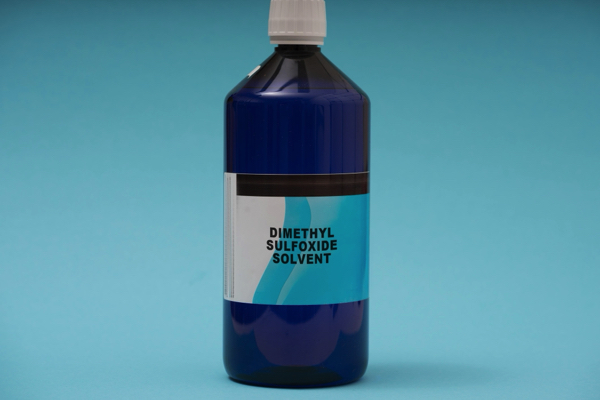Dr. Stanley W. Jacob’s book about DMSO takes readers on a journey through science and medicine
06/15/2025 / By Kevin Hughes

- Dimethyl sulfoxide (DMSO) was rediscovered in the 1960s by Dr. Stanley Jacob and Robert Herschler, revealing its ability to penetrate biological membranes, revolutionizing drug delivery and medical applications. A seminal 1971 book documented its chemistry, pharmacology and therapeutic potential.
- DMSO is a polar aprotic solvent, capable of dissolving diverse substances while acting as both a nucleophile and electrophile in reactions. Its molecular interactions (e.g., cyclic dimers, chain aggregates) underpin its versatility in industrial and lab settings.
- Clinically proven to reduce pain and inflammation (e.g., arthritis, scleroderma), but the FDA halted trials in the 1960s due to animal toxicity concerns (eye lens damage). Later conferences and European studies debunked myths, showcasing its safety and efficacy, though U.S. regulatory hurdles persist.
- DMSO enhances drug/antibiotic penetration in agriculture and medicine; acts as an immunomodulator, potentially aiding mucosal vaccines. Exhibits bacteriostatic/bactericidal properties against microbes, though its role in antibiotic susceptibility testing remains nuanced.
- DMSO also successfully treats equine inflammation and wounds but faces controversy over adverse reactions. It also alters collagen structure (useful for connective tissue disorders) and improves topical drug delivery, despite temporary skin irritation.
In the early 1960s, a serendipitous discovery by researchers Dr. Stanley Jacob and Robert Herschler unveiled the extraordinary potential of dimethyl sulfoxide (DMSO). This colorless liquid, first synthesized in 1866, possesses the unique ability to effortlessly penetrate biological membranes, opening up a realm of possibilities for drug delivery and medical treatment.
Imagine a world where injections could be replaced by simple topical applications – a vision that DMSO seemed poised to realize. The Oregon Health and Science University (formerly the University of Oregon Medical School) under the leadership of Jacob and his colleagues, compiled a seminal volume titled “Dimethyl Sulfoxide: Remarkable Nontoxic and Medical Activities of DMSO,” published in 1971.
This comprehensive tome serves as a testament to the global scientific community’s dedication to unraveling the mysteries of DMSO. The book meticulously details the compound’s chemistry, pharmacology and toxicology, offering a wealth of knowledge that continues to inform research and applications today.
DMSO’s versatility as a solvent is one of its most intriguing features. Belonging to the family of polar but aprotic solvents, it can dissolve a wide array of substances without being overly reactive.
This property makes DMSO an exceptional reagent in chemical reactions, capable of acting as both a nucleophile and an electrophile. Its ability to form stable solvates and undergo proton-transfer reactions further enhances its utility in various applications, from industrial processes to laboratory research.
Beyond its chemical prowess, DMSO exhibits remarkable biological effects. Clinical studies have demonstrated its efficacy in alleviating pain and inflammation associated with musculoskeletal injuries. This led to a surge in research exploring its potential in treating conditions such as arthritis and scleroderma.
However, the journey was not without obstacles. In the mid-1960s, a report suggested that DMSO caused eye lens disturbances in experimental animals, prompting the Food and Drug Administration to halt further clinical studies. This setback cast a shadow over DMSO’s future, but the scientific community remained undeterred.
Conferences organized by the New York Academy of Sciences and Schering A.G. in the late 1960s played a crucial role in dispelling myths surrounding DMSO’s toxicity. Thousands of patients treated with DMSO showed significant improvements, providing compelling evidence for the continuation of clinical evaluations. Today, while administrative hurdles persist in the U.S., DMSO is clinically employed in Europe with notable success.
The story of DMSO underscores the importance of scientific inquiry and the power of empirical evidence. The book delves into the compound’s chemistry, authored by H. Harry Szmant, which explores its structure and physical properties. It examines the formation of cyclic dimers at low concentrations and the equilibrium between extended chainlike and folded-chain or ring aggregates at higher concentrations, revealing the intricate molecular interactions that underpin DMSO’s unique properties.
Jacob’s exploration of DMSO’s pharmacology highlights its primary actions, including membrane penetration and transport. DMSO’s ability to carry nonionized molecules with low molecular weight through the skin has been particularly valuable in agriculture, where it has been used to enhance the penetration of antibiotics and other compounds into plants.
In the realm of experimental immunology, DMSO has shown promise as an immunomodulator and adjuvant. Studies indicate that it can enhance the immune response when administered with antigens, suggesting potential applications in mucosal vaccination strategies. However, the interaction between DMSO and the antigen-antibody reaction is complex, with DMSO potentially interfering with the agglutinability of certain bacteria after heat treatment.
DMSO’s role in microbiology and serology is equally fascinating. Its bacteriostatic and bactericidal properties have been extensively studied, with researchers exploring its effects on various microorganisms.
DMSO has been shown to inhibit the growth of bacteria, fungi and viruses, making it a valuable tool in combating infectious diseases. Its ability to act as a penetrant carrier has also raised questions about its effect on antibiotic susceptibility testing, with studies indicating that DMSO does not interfere with chemotherapeutic susceptibility testing at tested concentrations.
In veterinary medicine, DMSO has been used topically to treat inflammatory conditions in horses, with remarkable success in minimizing pain, edema and necrosis. Its application in treating open wounds and controlling excessive granulation tissue has also been documented. However, the use of DMSO in veterinary medicine is not without controversy, with reports of adverse reactions and the need for further research to fully understand its potential benefits and risks.
The chapter on the effects of DMSO on connective tissue, authored by G. Gries, explores how DMSO affects collagen’s structure, leading to changes in its physical properties. This has implications for dermatological treatments and research into connective tissue disorders. DMSO’s ability to alter the tertiary structure of collagen and stabilize mucopolysaccharides in vitro suggests its potential in managing conditions like scleroderma.
In dermatology, DMSO has been investigated for its ability to enhance percutaneous penetration and deliver therapeutic agents into the skin. While its topical application can cause local irritation, studies have shown that these effects are reversible upon withdrawal of the drug.
Clinical studies have explored the use of DMSO as a vehicle for dermatological agents, with mixed results. Some studies have reported improvements in conditions like scleroderma and herpes simplex, while others have found no significant benefits.
DMSO is a remarkable compound with a wide range of applications. Its unique properties make it a valuable tool in various fields, from medicine to agriculture and beyond. While challenges remain, the potential benefits of DMSO are undeniable. As people continue to explore its capabilities, they may uncover even more uses for this extraordinary compound.
Watch this video about Dr. Stanley Jacob’s book “Dimethyl Sulfoxide: Remarkable Nontoxic and Medical Activities of DMSO.”
This video is from the BrightLearn channel on Brighteon.com.
Sources include:
Submit a correction >>
Tagged Under:
adjuvant, arthritis, bacteria, Chemistry, cyclic dimers, dermatology, dimethyl sulfoxide, DMSO, Dr. Stanley Jacob, Europe, Food and Drug Administration, Fungi, immunology, immunomodulator, inflammation, medical treatment, Microbiology, pharmacology, Robert Herschler, scleroderma, serology, toxicology, United States, Viruses
This article may contain statements that reflect the opinion of the author





















